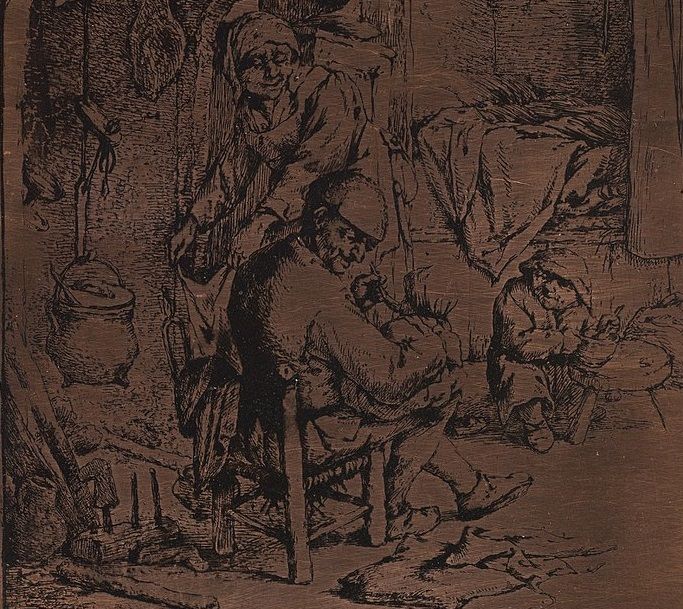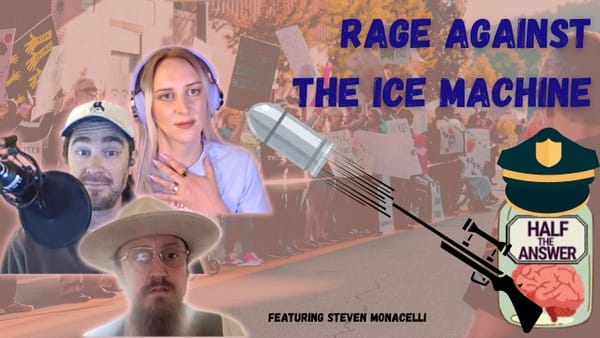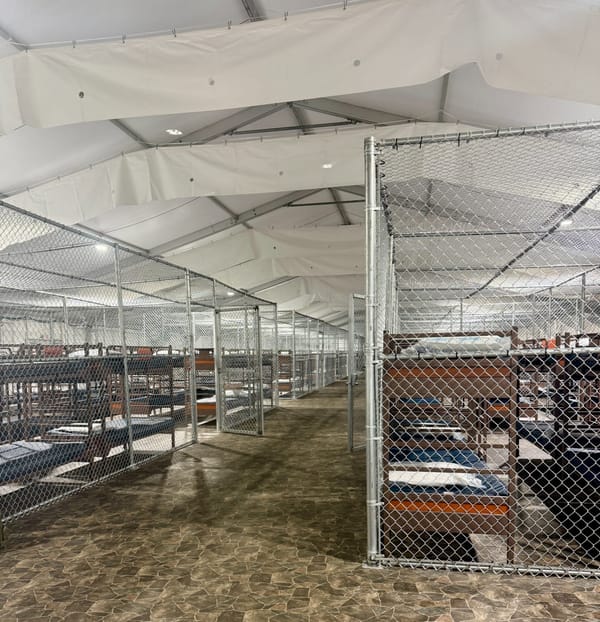The Political Economy of Patriarchy

There’s a new program of anti–trans and increasingly anti-queer simpliciter politics sweeping across America. After they lost on gay marriage in courts of public opinion and Supreme, Republicans went looking for a new bogeyman. They found it in trans people. Their new hate campaign is focused on the idea that trans people are “grooming” children (and never mind the many actual documented cases of preachers, priests, and pastors literally grooming children). It has largely failed to win over voters, but it plays well with the conservative set.
None of this is that surprising. What is surprising is the number of ostensibly liberal commentators dressing up this latter-day Satanic Panic in feminist language. This is most clearly seen in the British anti-trans hate movement known to its supporters as “gender critical feminism” and its opponents as “terfism,” most famously advocated for by children’s author Joanne Rowling, but also supported by a small number of influential authors and editors at British newspapers. Why are these nominal feminists so eager to sign up with a hate campaign organized by blatantly misogynist conservatives whose other policy goals include banning abortion, birth control, and no-fault divorce?
To understand this phenomenon, we must recognize that it is not new but old—that some version of it has been with us from the very first wave of feminism. We are confronted with a puzzle: “Why have [some] women always been willing to sign up to defend the forces of their own oppression?” This puzzle can seem especially difficult if you have a simple understanding of feminism’s enemy, patriarchy, as a uniform field of oppression that runs from all men to all women. Why has feminism always struggled to maintain a united front in the face of patriarchal oppression?
The Old System
Patriarchy is older than history. Patriarchy is almost certainly older than agriculture. This makes it an almost incomprehensibly ancient inheritance of humanity—fifty or a hundred thousand or more years old. And yet, unlike so many other things of comparable antiquity, patriarchy has endured down the ages and to the modern day. At the same time, patriarchy has the queer feature of being personal, familial, and political all at once.
To understand its antiquity, its ubiquity, and its durability, we need to understand patriarchy as a form of social organization—which is to say, we need to understand its political economy. We’ll build up this picture in steps, though it’s important to understand that I am not describing a historical process—I describe these features in this order to make it easier for the reader to follow.
What follows might strike some readers as objectionably evo-psycho. But while evolutionary psychology seeks to reassure its readers that contemporary biases are natural and normal by way of just-so stories about The Savannah and some sleight of hand involving the phrase “designed by natural selection,” the project here is to understand a material structure of power with the aim of tearing it down.
Now. Picture a primordial couple, a man and a woman. They both have an interest in having children. Most reproductive labor is done by the woman, but she doesn’t have much ability to set the terms on which that labor is performed—which is an anodyne way of saying that men rape women, and women bear the consequences of pregnancy. Not all sex is rape—but rape is a pervasive aspect of the premodern world. The unfortunate result of this is that the average premodern woman would spend the majority of her adult life either pregnant or nursing.
And here we must go beyond Firestone and recognize that reproduction has the rather signal effect of producing children. And in the premodern world, children are a resource rather than a liability. Children start work at very young ages—typically, helping to tend to even younger children and babies; they graduate rapidly to ordinary housework, and soon after to normal adult responsibilities. (Childhood as an extended period of innocence and education that costs parents vast sums of money is a particularly modern invention—we’ll return to the importance of this fact later.) Sons in particular have a central role in perpetuating “the family line” in many societies, which makes them an especially prized resource.
But while our primordial family is busy with these activities, so are all the other primordial families. Our primordial family is related to some of them—brothers, sisters, cousins, etc—and not to others, or at any rate not closely. And humans, by and large, prefer their families (even the extended parts) to strangers—you can tell a kin selection story about this, if you like, or you can just accept it as fact. But being as how human beings are political animals, we do not identify our cousins by smell or through any other biological pathway, but through culture. The in-group is identified by knowledge, tradition, language, culture; the out-group in similar fashion—though these identifiers are often pseudobiological in surface appearance. So our primordial family is organized together with some other primordial families, and sets itself against strange Others.
This premodern world is a world of low economic growth. Technological and social progress are so slow as to be imperceptible. The only way to grow (which is to say: gain power) is through “extensive growth”—or, put more plainly, to use violence to acquire land or people. “Acquire people”—and here we come to slavery and rape. Acquiring people in this way means that our primordial family has, in addition to its family unit and its collection of “cousins,” a servant class notionally unrelated to them. (This is the reason that patriarchal and racist sentiment are so invariably intertwined, despite their superficial distinctions: they each express an aspect of the Old System.)
This completes our picture of the “ideal type” of patriarchal society. The family unit is a unit of production; it produces goods and it produces people. The fruits of this production are not accorded to those who produce them, however, but to those who have the power to seize and redistribute them—patriarchs. Patriarchs divvy out the fruits of this production so as to maintain their own control over the system. The woman’s part of this is sometimes known as the patriarchal bargain: she provides children and service, and receives security.
Of course this system rarely operates as pure naked domination, and instead under an ideology and a culture that explains that this is all for the best for everyone, and to one degree or another gains adherence from much of the population. And there is of course substantial local variation in all this—in kinship systems, in the understanding of the in-group and the out-group, in the precise contours of male dominance, in better and worse conditions for women. But while these variations may seem substantial in local perspective, none of them so much as approach what we today would think of as acceptably feminist social orders: they are all characterized by pervasive male domination.
One final note, and an important one: this system is fractal, in that the same structure recurs at different levels of analysis. The larger collection of patriarchal families called “society” is likewise controlled by powerful men, who, we are so often told, rule over the rest “like my own children.” At the same time, the subaltern servant class has a similar patriarchal structure in its own families.
Faggots and quislings
The funny thing about patriarchal societies is that they are not characterized by peace and order, but by constant conflict and disturbance. This is because of the nature of human reproduction: there are always more sons than there are slots for being a patriarch. The Ideal Family, by its very nature, produces too many people to fill all the Ideal Roles. And this is on top of the fact that there are always those who do not “fulfill their telos,” as Aristotle might have put it: the fags, the dykes, the whores, the trannies, the failsons—and other worse slurs I won’t put to print here. The bad women and the failed men: every social position in the system is partly defined by how you can fail at that role, how you can be a “defective ____.” And, as described above, these terms are very frequently racialized, or capable of being racialized—because that subaltern class is an inherent part of the system.
We are now in a place to explain the durability of patriarchy as a social system—or, put another way, to explain why so many people who are oppressed by the system have been so willing to defend it. The fine-grained internal structure described above means in practice that wherever you are in the patriarchal social structure, you maintain your place by stepping on the head of those below you. The fruits of human production are divvied out according to how well people fulfill their roles in this system—good wife, dutiful son, faithful daughter, etc. etc. And if you want to keep your slot as One Of The Good Ones, it behooves you to support the system as a whole. (It is perhaps worth noting in passing the similarity of this structure to the program of colonial exploitation known as “divide and rule”: and here we see the fractal nature of the Old System at play.)
As important as the material rewards, however, is what we might call the psychic wage of hierarchy: the pleasant feeling one gets knowing that you are in your place because you are good, and your place is above others, who are bad, and deserve it. “I am a dutiful wife and mother, not like those filthy whores!” What makes patriarchy such a durable social structure is not that it is simple and inflexible and unalterable, but rather that it has a plethora of ranks on the hierarchy, such that everyone involved is at once both anxious about falling down it, and eager to climb up it. Every man wants to be a patriarch and fears being a faggot; every woman wants to be a mother and fears being a whore (or at least she wants the safety and security that come from being such, even if the act of motherhood is rather a difficult one).
This is why, incidentally, the patriarchy is in material terms quite bad for men—patriarchy isn’t the rule of men, it is the rule of fathers, and the rat race of men competing with each other to become patriarchs both inevitably produces a great many losers and in the process does immense spiritual damage even to those who win. The cruelty consumes you. Just go read your average incel’s manifesto to see what I mean.
Thus we finally arrive at our central topic: understanding that from the very first moment that the very first feminists began to challenge this system, they were opposed by other women who presented feminism—liberation—as a danger to women. Witness, for instance, what Hannah More, a conservative critic of Mary Wollstonecraft, had to say about women: “Nature, propriety, and custom have prescribed certain bounds to each [sex]; bounds which the prudent and the candid will never attempt to break down; and indeed it would be highly impolitic to annihilate distinctions from which each acquires excellence, and to attempt innovations, by which both would be losers.” A moment later we’re hearing about how women are porcelain vases who must be kept in locked cabinets for their own good, and never venture into the Affairs of Men (for their own safety). The same phenomenon will recur with the coming of the suffragist movement—a recurring feature of anti-suffrage activism will involve portraying suffrage as harmful to women.
And of course the second wave likewise had its own anti-feminists—most famously, Phyllis Schlafly, who called her anti-ERA organization STOP: “Stop Taking Our Privileges.” This is the model for anti-feminist feminism: “demanding your ancient rights and prerogatives [within the system],” for it is precisely by handing out some (conditional) benefits to some (en toto) marginalized persons that the system maintains its own stability.
More’s metaphor of women as exquisite porcelain vases that must be kept locked in secure cabinets is instructive, because it so clearly outlines the most standard anti-feminist dialectic: “Women are in danger from male violence. Since they are too weak to protect themselves, they therefore require protection by other male violence. To earn this protection, they must accept the patriarchal bargain—a share of men’s resources and protection, in exchange for faithful service.” We might also refract this through the lens of Good Ones and Bad Ones: “good women are in danger of violence from bad men, so they need protection by good men, which they earn by being good women.” And what makes a good woman or a good man is their willingness to both embody and enforce patriarchal norms.
A feminism of liberation
Thus far this essay has been pretty dismal. The Old System endured fifty thousand years in its filthy horror. It’s based in deep facts about human biology and human psychology. How are we to overcome it? The answer is that we have already begun to do so; the explanation lies in what an economic historian would call the Great Divergence and you probably know as the Industrial Revolution. Circa 1800, economic growth stopped being approximately zero, and the long-run graph of human technological progress tilted upwards—dramatically.
This had some important social consequences. Human interaction stopped being a zero-sum game. The key to modern prosperity isn’t rape and slaves and land theft—it’s peace, commerce, and mutually beneficial interaction. And this explosive growth in technology deeply changed the nature of human labor. The principal contribution of an adult man today isn’t to drive a plough or swing a sword. Modern production relies increasingly little on brute physical strength, and increasingly deeply on education and skill. This radically changed the calculus of reproductive labor—children were no longer a near-instant source of labor, but an expensive long-term investment. At the same time, a wife in constant childrearing mode was an immense loss of income. And new reproductive technologies in abortion and birth control gave women increasing control over reproductive labor. The net result of all these changes was that, for the first time, a society of free and equal human beings, without regard to gender or race, became possible as a durable mode of human social organization.
The fundamental interest of persons in a liberal society is equal access to participation in society—economically, politically, socially. Nothing more, nothing less. This is just another way of saying that we have an interest in autonomy, in the chance to be a law to ourselves—to chart the course of our lives as we see fit. And, somehow, the chaos of it all works out to all our benefit.
But even as progress has undercut the foundations of the Old System, it staggers onwards under its own inertia. To he who has, more will be given. Pre-existing inequalities of wealth and power continue to enable those who possess them to extract more wealth and power in the future. And the cultural inheritance of patriarchy continues to pollute all our minds. Thus the Old System continues to attract quislings, happy to sell out the rest of us for the conditional reward of being One Of The Good Ones. The Old System is a prehistoric persistence, a monster from the human past that we must all liberate ourselves from, materially and psychologically.
The struggle before us is to make real this possibility of a society of free and equal citizens. To do this, we must distinguish between a feminism of liberation and a “feminism” of false empowerment. The feminism of liberation tells us that we must liberate everyone from the shackles of this thing called patriarchy. The feminism of false empowerment presents itself as empowering women, but only does so within the confines of the patriarchal order—in truth, it is nothing more than defending the “ancient rights and prerogatives” of “good women.” Contemporary anti-trans “feminism” falls firmly in the latter category. Their activism invariably is oriented around a hierarchy of good women and bad women, inevitably circumscribed by patriarchal logic. In the end, they are obsessed with maintaining a pretty prison for themselves from the lofty heights of which they can pride themselves as at least being better than those Other Women who deserve everything they get. Three examples of contemporary feminist—”feminist” contestation will illustrate the point: puberty, sports, and bathrooms.
Sometimes, a teenager looks at the puberty barreling towards them, says “seems bad,” and takes a couple of pills that put them on the other track. This, anti-trans feminists would have us believe, is a national emergency. Our daughters are being “groomed” by “social contagion” to “mutilate themselves.” We better ban this, post haste—we need to protect our daughters from the danger! The anti-trans crowd talks as if teenage girls were primarily vessels for wombs, and that these wombs matter more than “whatever silly notion they have in their silly heads”—as Schreier’s cover image so memorably suggests. The opponents of teen transition are rather like those nice church ladies who are “of course” all in favor of choice, they just think that pregnant teenage girls should be required to go through six years of mandatory counseling and evaluation (and in the meantime we’ll let nature take its course), and indeed after all they’ll probably change their mind soon (you know how flighty teenage girls are).
The feminism of liberation teaches us that all persons have a fundamental interest in their own bodily autonomy, prior to any pious handwringing about the contents of their abdomens, that puberty produces irreversible changes in the body (given our present medical technology), and that therefore if a teenager is insistent, persistent, and consistent that they’d like to control the course of their own future life, they ought to be able to—just like all the rest of us. We should ensure that everyone has access to the medical and social capacity to be a law to their own flesh—this means access to abortion, access to gender transition, and access to health care generally.
Now maybe this all feels a bit polemical to you. Medical transition is a life-changing decision; surely it might be reasonable to protect children from such risks—after all, they’re children; we protect them from all kinds of risks. Let us not ask why the “children protectors” are so obsessively focused on “protecting” trans boys and not trans girls; let us not ask why we must protect children from a trans puberty but not a cis puberty. Let us simply grant that transition is the kind of thing we might want to protect children from. But the truth is that almost no one who undergoes medical transition regrets it. While a variety of children will, at one time or another, express some degree of “gender variance” or dissatisfaction with their gender role, of those children, the ones who are insistent, consistent, and persistent enough to get access to puberty blockers and hormone replacement therapy are almost uniformly happy with the result. Something on the order of 99% of teenagers who go on hormone replacement therapy are happy with it, and a substantial fraction of those who do regret it do so because of the discrimination and oppression they face afterwards, rather than for any intrinsic reason. We let children ride horses, get knee surgery, and take out student loans, all of which are substantially more dangerous—and more regretted—than gender transition. By any reasonable standard, we do a pretty good job protecting children from whatever risks gender transition may involve.
Sometimes, a bunch of girls get together and play a sport. And sometimes, a trans girl takes third, or maybe even just fifth. This, anti-trans feminists would have us believe, is a national emergency. Our daughters are being dominated and brutalized by these roided-out trans monsters! We better ban this, post haste—we need to protect our daughters from the danger! The anti-trans crowd talks as if the most important thing about sports is that three spots on the podium must be reserved for white America’s prettiest daughters, because how else are they going to get into college.
The feminism of liberation teaches that the three people on top of the podium are, in fact, significantly less important than the thirty thousand people who competed in the tournament—who got the chance to participate in that aspect of human excellence called “sport.” Sport is not a way of answering “who is naturally the best,” because that’s a silly question. We’ve got forklifts now, we don’t need strongmen for anything real. Simply, we all have an interest in access to that form of social participation called sport. We should ensure that there are sufficient opportunities for everyone to engage in enjoyable athletic activity, not maintain some expensive preserve in which The Right People get to prove how special they are.
Now perhaps this all feels a bit polemical to you. We already—through leagues and weight classes and age classes and competitions—regulate athletic competition in a variety of ways to ensure that the games are fun and enjoyable, rather than one-sided blowouts. Let us not ask why the sports protectors have never once before this moment evinced any interest in women’s participation in sports—in the problems of harassment, underfunding, and sexism that prevent women across the country from participating in athletic excellence. Let us not ask whether women’s sports leagues have, from the start, been designed to prevent women from participating in athletics rather than to encourage such participation. Let us not ask why the sports defenders seem so resolutely focused on “protecting” white women from black women. Let us simply grant that physical overmatch is the kind of thing we might segregate athletics by. But the truth is that trans women who have undergone medical transition do not have much, if any, advantage over cis women; certainly they do not have an advantage that is so decisive as to be insurmountable—that is the kind of thing that would leap out of the data (and signally fails to). Including trans women in sports poses no threat to cis women’s participation in sports; excluding trans women from sports quite obviously poses a threat to theirs.
Sometimes, a woman uses a public restroom. Sometimes, that woman has a dick. This, the anti-trans feminists would have us believe, is a national emergency. Our sacred public bathrooms are being “infiltrated” by “pedophile predators” who want to expose themselves to innocent women and girls! We better ban this, post haste, and post a guard at every women’s bathroom door to perform a genital check. Just in case. The anti-trans crowd talks as if the primary danger to women and girls’ sexual purity comes from disgusting outsiders who must trick and force their way into Women’s Spaces—and not, instead, from perfectly ordinary and familiar men in positions of respect and power.
The feminism of liberation teaches us that most rapes are committed by men the victims know. The “dangerous outsider” from which good women must be protected is a classic figure of the Old System, the threat of which has always been used to justify the guardianship (ownership) of women’s bodies by “good” men—recall that security guard, and his genital checks. Note the degree to which this harassment is almost invariably directed against gender-nonconforming women—which is to say, almost always used to reinforce patriarchal norms. The feminism of liberation teaches us that increasing the power of men to regulate women’s bodies does not decrease rape and sexual assault, but increases it.
Now perhaps this all seems a bit polemical to you. It shouldn’t. Fathers, priests, and powerful men are the primary perpetrators of sexual assault. Consider the pervasiveness of sexual assault in conservative Christian denominations from the Catholic Church to the Southern Baptists to the British Methodists. Consider the repeated scandals involving police officers raping the sex workers they are, supposedly, protecting from Dangerous Pimps. And consider, dwarfing all the above by orders of magnitude, the number of women and children raped by their own family members or acquaintances. Trans bathroom predators, on the other hand, simply do not exist. Just as the Satanic Panic displaced increasing knowledge of the pervasiveness of domestic child abuse onto a suspicious and luridly imagined Other, so too does the recent trans panic displace the pervasiveness of rape and sexual assault brought to light by Me Too onto a suspicious and luridly imagined Other—the simultaneously dangerous, disgusting, and pathetic transsexual.
If we want a chance at tearing down this hideous endurance, we must confront it, not acquiesce in its framing of the problem—not accept the idea that there are visibly identifiable “bad men” who “good women” must be protected from by the violence of visibly identifiable “good men.” Accepting this dynamic simply places more power—physical, material, social, epistemic—power in the hands of those men who can pass themselves off as Good. And history teaches us very clearly what such Good Men do with that power.
Forwards
The liberal project of ensuring equal access to social, political, and economic participation for all is still incomplete. The project of liberating us all from the Old System of hierarchy and domination—our biological inheritance—is still incomplete. The great question of the age is whether we shall liberate ourselves from the muck we were born in—or drag ourselves back under, in the name of “protecting” ourselves from a world without domination. The past wishes to strangle the future, and from the dawn of time to today it guises itself in the language of “protecting women and children” from those Dangerous Others. Contemporary anti-trans “feminists” seek to reify that ideology in which women are inherently weak and fragile and in need of constant protection from Man’s World. Rather than retreating into biopessimism or monasticism, we must instead look forwards to a future in which all people regardless of gender or gender identity are free to chart their own course through the world—biology and patriarchy be damned.
Featured Image is The Pater Familias, by Adriaen van Ostade





